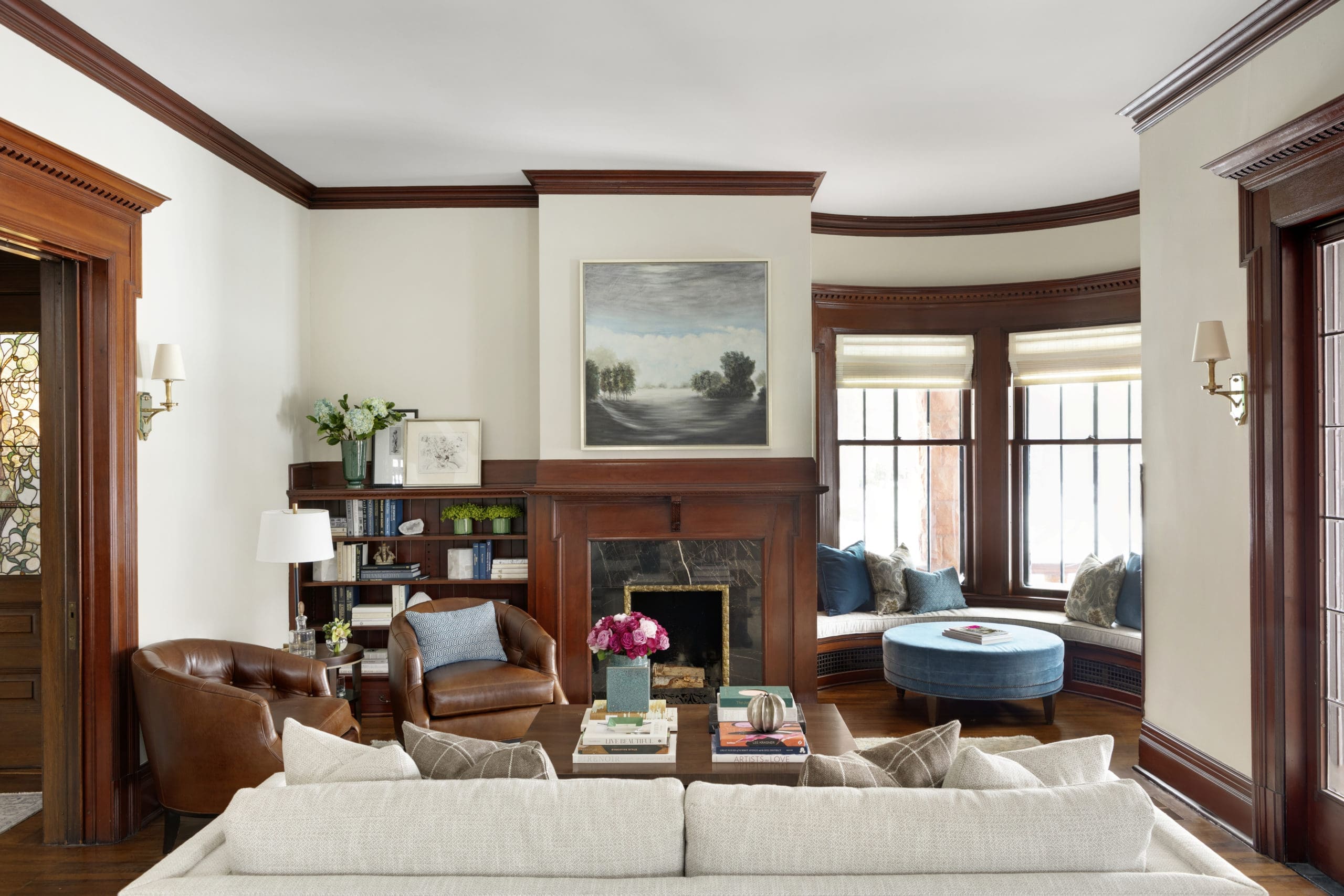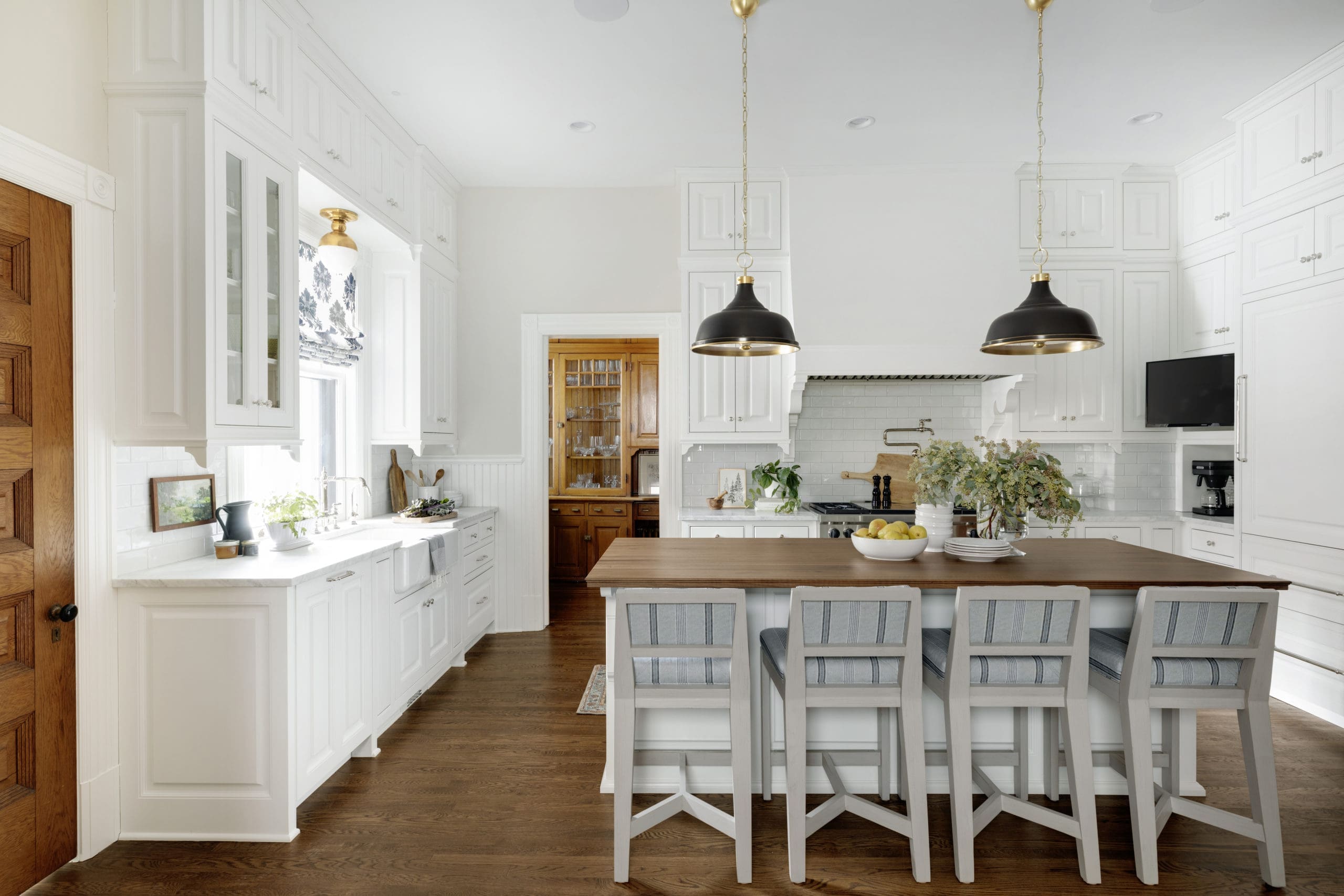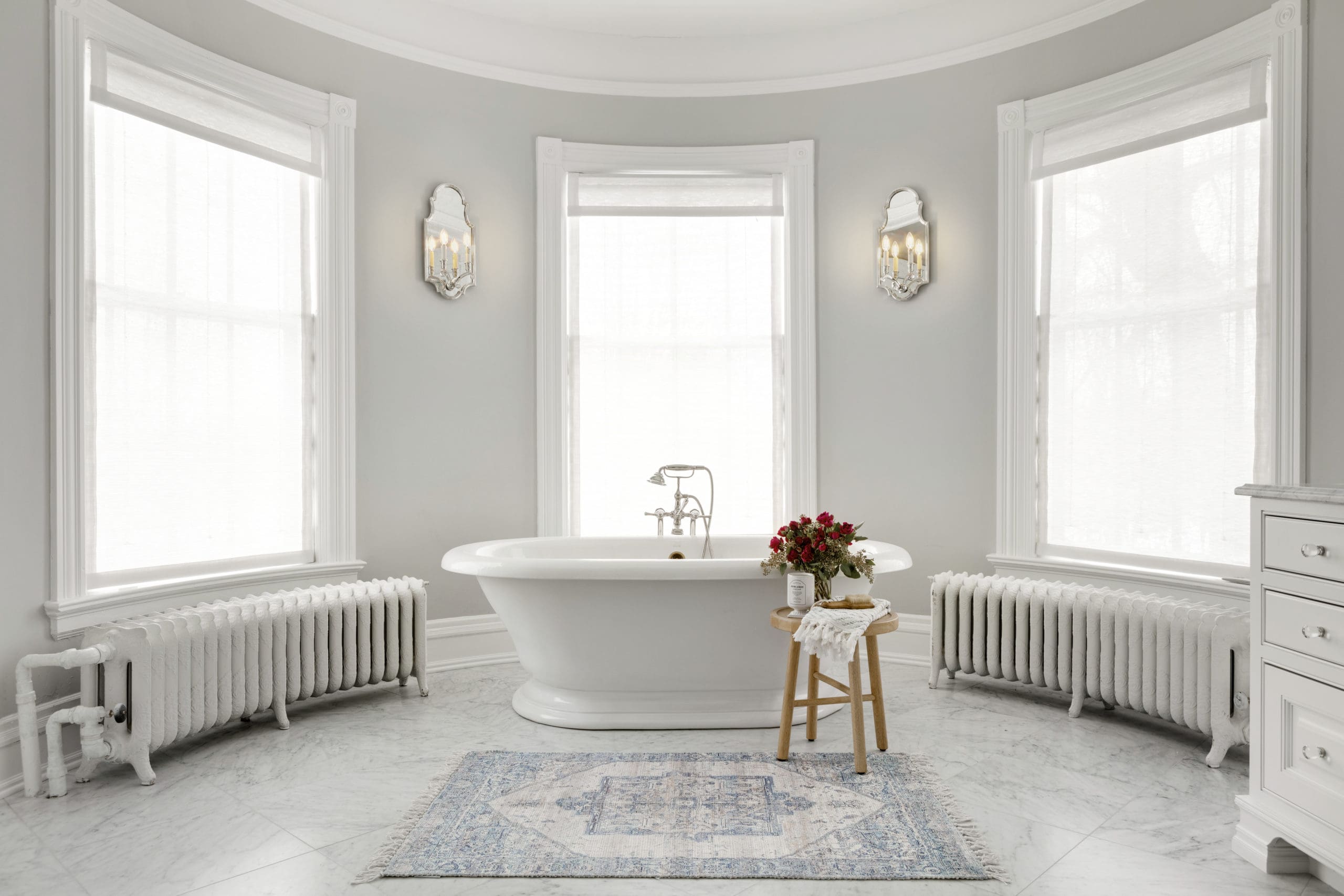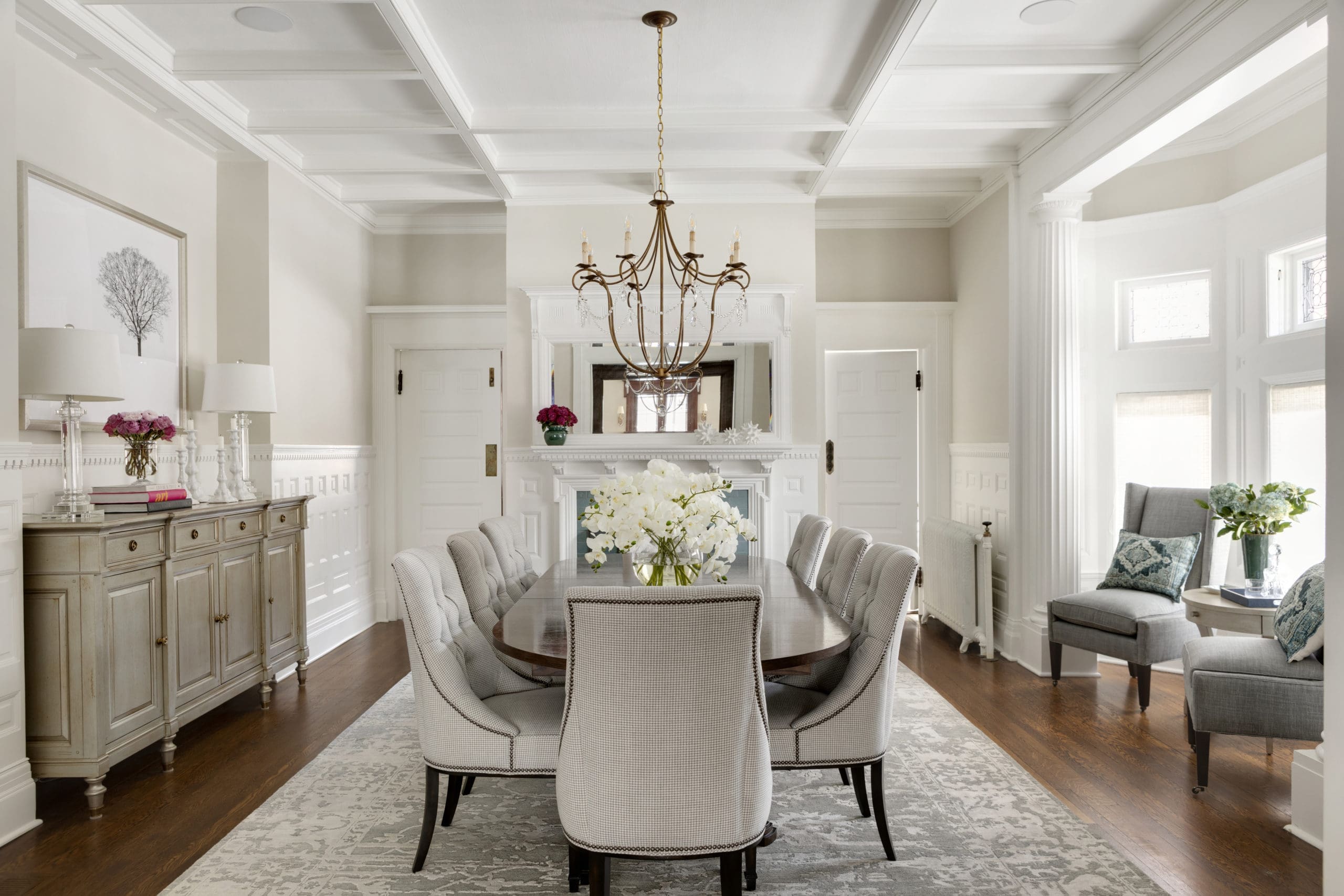
Photography by Spacecrafting
She is an 1894 Masonry-style Queen Anne Victorian, designed by renowned architect Clarence Johnston and situated on St. Paul’s stately Summit Avenue. An empty nester couple looking to make a switch from their suburban home had initially thought perhaps they’d build new, but once they laid eyes on this Queen Anne, they were smitten. It had good bones. A kitchen and bath remodel and some floor refinishing, and they’d be all set.
But of course, the walls of historic houses usually hold secrets. These walls hid a variety of code violations, some asbestos and a number of other kinks to straighten out in order to bring the abode up to code and to the level of detail the owners wanted. For instance, one of two woodburning fireplaces in the parlor needed chimney reconfiguration and a new liner to bring it back to a functional state.

To take the helm for the kitchen and bath design, the owners tapped Lisa Loushin Kroskin of Haute Kitchens and Interiors. “They loved the home’s architecture and historic elements, but it was not their personal taste,” she says. “It was heavy; she wanted more elegant and welcoming. It could have easily felt unwelcoming if not redone properly.”
And as much as the owners loved the historic aspects of the house, they weren’t interested in turning it into a museum. “People should walk into this home and feel like they can actually sit in the chairs and get comfortable,” notes Loushin Kroskin. In other words, living in history rather than living history.
Loushin Kroskin knew it would take a certain kind of builder to forge a natural marriage between the historic elements of the house and the modern, livable sophistication the clients were after. There was never any question — she called Tim Purcell, owner and president of Purcell Quality, to help.

A self-described history buff, Purcell was a natural fit for the project as the layers peeled back to reveal a lot of heavy lifting on the code front. He viewed his role as both preserving the original beauty and finding creative solutions to problems, such as matching millwork and duplicating missing corbels. And it was no small task; he estimates there were some 38 different millwork profiles alone.
“I love working on a home that hosts so many stories,” Purcell explains. “It’s one thing to work on an old home and quite another to work on an old home with historic significance. In protecting the integrity of that original home, you have to be really careful — you can’t just start gutting finishes. Part of our job is to be conscientious about original details and moldings. Anyone can gut a space and start over, but it takes a special kind of contractor with a passion for old homes to be able to work in the space, maintaining the original integrity yet giving the client modern conveniences.”
This also meant balancing the owners’ preference for simplicity with the ornate tendency of Victorian design. Much of the abode got an overhaul, such as the reconfigured owner’s suite, which now boasts a beautiful freestanding tub as the crown jewel to the curved walls and windows. But other elements were preserved; the kitchen, for example, retained its original Victorian-sized footprint, complete with butler’s pantry and an added pantry.

When it came to furnishings, the homeowner turned to a Twin Cities favorite: Traditions. “She made our job easy,” notes Vice President Mary McElroy and her team. “She is so detail-oriented and was very thoughtful in everything she selected for the house. Every piece had a lot of thought put into it.”
Classic American-made pieces that are also livable — some clad in easy-cleaning Crypton performance fabric — flow from room to room. The Traditions team loves the dining room in particular. “It’s just stunning,” McElroy explains. “The owners left a lot of the original and simply updated it. From the rug to the chandelier, the dining room is a total showstopper from the very moment you walk into the house.”
Purcell agrees that the project turned out pitch-perfect. “We found the original blueprints to the house, and it was really cool to go back and see that it is so close to what was actually built,” he says. “I’m proud of our team and the persistence for perfection and getting all the details right.”


